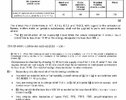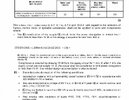Hi forum,
Like probably everyone else we try to avoid reverting to a fire enclosure.
I have some trouble interpreting the first dot of second dash of 13.1.2:
- Secondary circuits meets all of the following conditions:
• mounted on material with a flammability classification of V-1 in accordance with IEC60695-11-10 or better. (and then another 3 easier dots..)
We have a connector flexPCB (0.1mmm polyimid) with only copper traces.
I found out that our flex manufacturer will not classify the flex with a V-1 classification with a rationale: "when you make materials this thin a lot non-flammable classified materials may become flammable". I'm not an expert in Polyimid or flammability so I cannot judge this statement. I should think that the amount of copper on the flex has it's influence on flammability as well.
Our flex only has copper traces, of course wide and thick enough to accommodate the maximum of 20mA currents at maximum 2V.
Is this considered as "circuits mounted on a material?", and if so: is there any way to dodge the requirement?
I have heard from the VTM classification, but that is not mentioned in 60601-1.
And when a circuit is clearly mounted on a UL V-1 FR4 PCB, when is "touching" considered "mounting", like with connectors in a housing?
Thanks for reading this.
Loek
Like probably everyone else we try to avoid reverting to a fire enclosure.
I have some trouble interpreting the first dot of second dash of 13.1.2:
- Secondary circuits meets all of the following conditions:
• mounted on material with a flammability classification of V-1 in accordance with IEC60695-11-10 or better. (and then another 3 easier dots..)
We have a connector flexPCB (0.1mmm polyimid) with only copper traces.
I found out that our flex manufacturer will not classify the flex with a V-1 classification with a rationale: "when you make materials this thin a lot non-flammable classified materials may become flammable". I'm not an expert in Polyimid or flammability so I cannot judge this statement. I should think that the amount of copper on the flex has it's influence on flammability as well.
Our flex only has copper traces, of course wide and thick enough to accommodate the maximum of 20mA currents at maximum 2V.
Is this considered as "circuits mounted on a material?", and if so: is there any way to dodge the requirement?
I have heard from the VTM classification, but that is not mentioned in 60601-1.
And when a circuit is clearly mounted on a UL V-1 FR4 PCB, when is "touching" considered "mounting", like with connectors in a housing?
Thanks for reading this.
Loek



